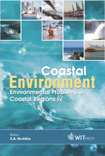Assessment Of Risks From Environmental Contamination To Endangered Species At Remote Lightstations Along The Pacific Coast Of Canada
Price
Free (open access)
Transaction
Volume
58
Pages
Published
2002
Size
572 kb
Paper DOI
10.2495/CENV020071
Copyright
WIT Press
Author(s)
L Harding, G Mann, N Healey & P Allard
Abstract
Assessment of risks from environmental Contamination to endangered species at remote lightstations along the Pacific coast of Canada. L. Harding1, G. Mann2, N.Healey3& P. Allard2 1SciWrite Environmental Sciences Ltd., Canada 2Azimuth Consulting Group Inc., Canada 3Fisheries and Oceans - Canadian Coast Guard, Canada Abstract The Canadian Coast Guard is assessing the potential environmental impacts of contamination at 27 remote lightstations on the British Columbia coast. British Columbia has about 25,000 km of shoreline including thousands of islands, most of which are accessible only by boat or helicopter. The lightstations, which have been in use for up to 140 years, essentially consist of industrial installations maintained by resident lightkeepers in settings of otherwise pristine coastal wilderness. The region is a hotspot of biological diversity. Previous studies had shown that heavy metals and petroleum hydrocarbon concentrations in surface soils exceeded provincial and federal environmental standards and guidelines at these stations. Contaminant sources include the historical use, degradation and dispersion of heavy metals based paints, waste dumping and incineration, and bulk petroleum hydrocarbon storage and transfer. This paper presents a study used for assessing potential impacts to endangered species and habitat elements from direct (contact) and indirect (food chain) exposure to the environmental contamination. An initial search of endangered species and habitat element records identified over 300 occurrences in marine and terrestrial environments among the sites. Variability in the extent and magnitude of contamination, anticipated transport and fate of contamination, and the distribution of sensitive receiving environments, including the presence of rare species, provided a basis to prioritise 14 lightstations for field study. The subsequent field investigations consisted of a qualitative habitat survey and collection of environmental samples of relevant exposure media (e.g., soil, plant tissue, soil invertebrate tissue, groundwater, surface water, and mussel tissue) for chemical analysis. Measured concentrations in exposure media were then input into a food chain
Keywords





